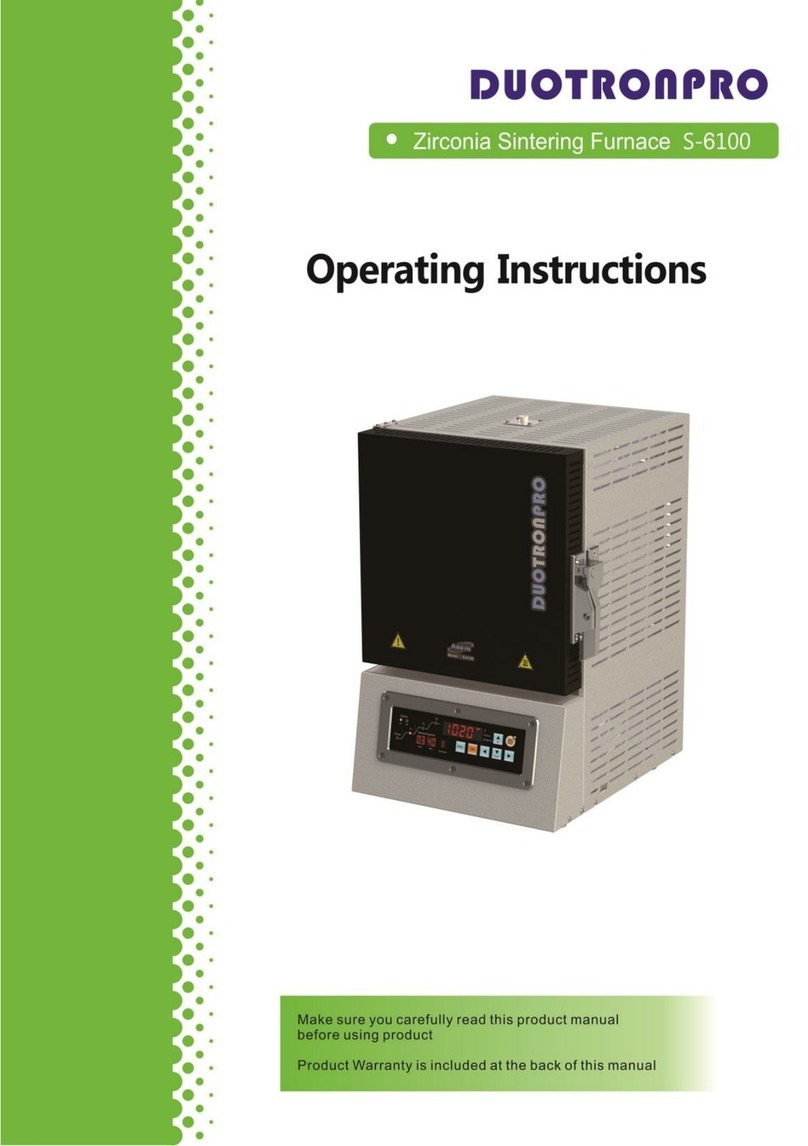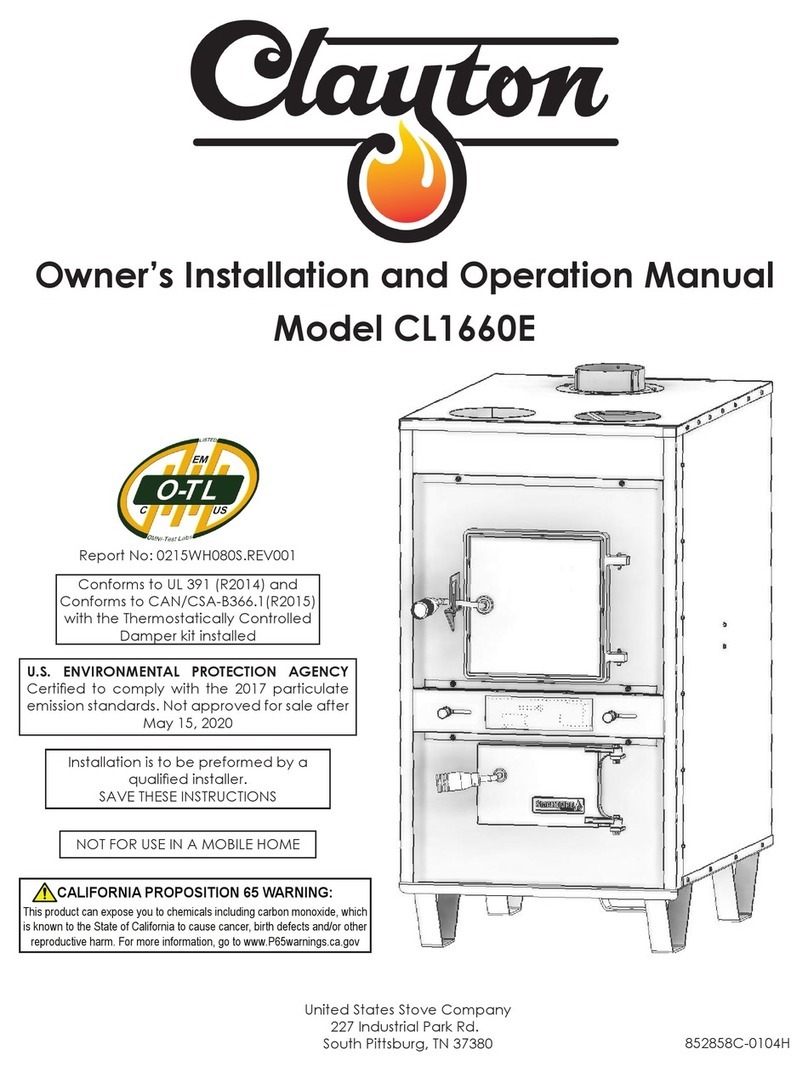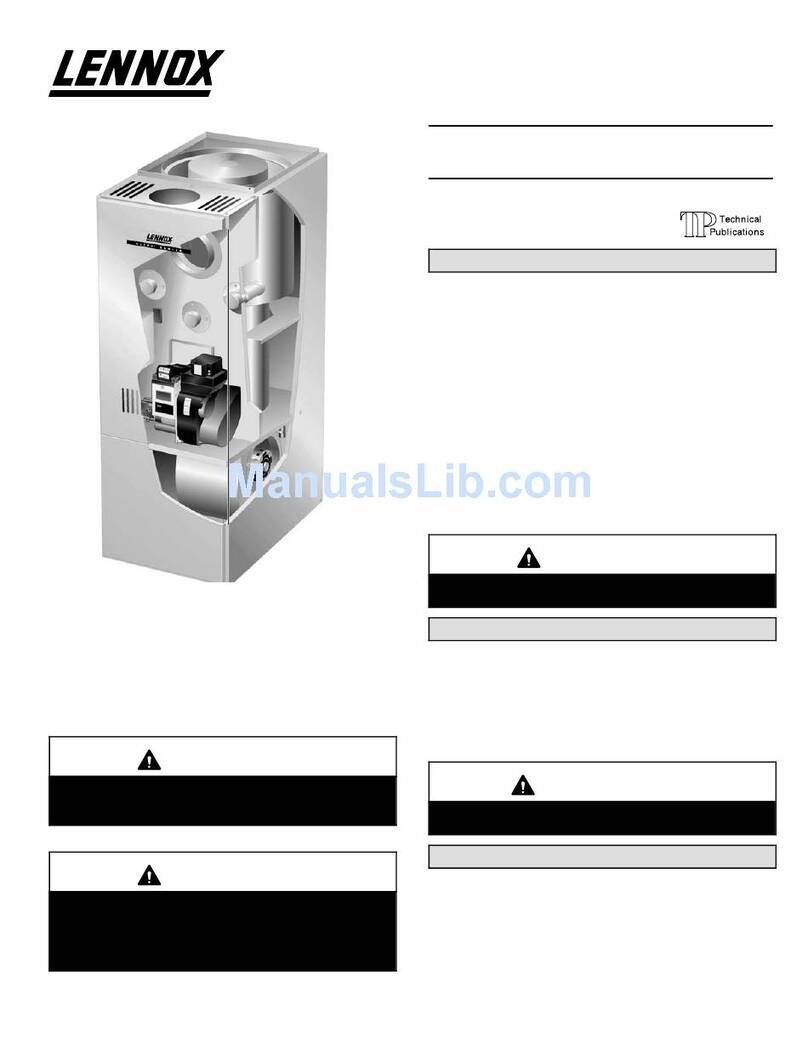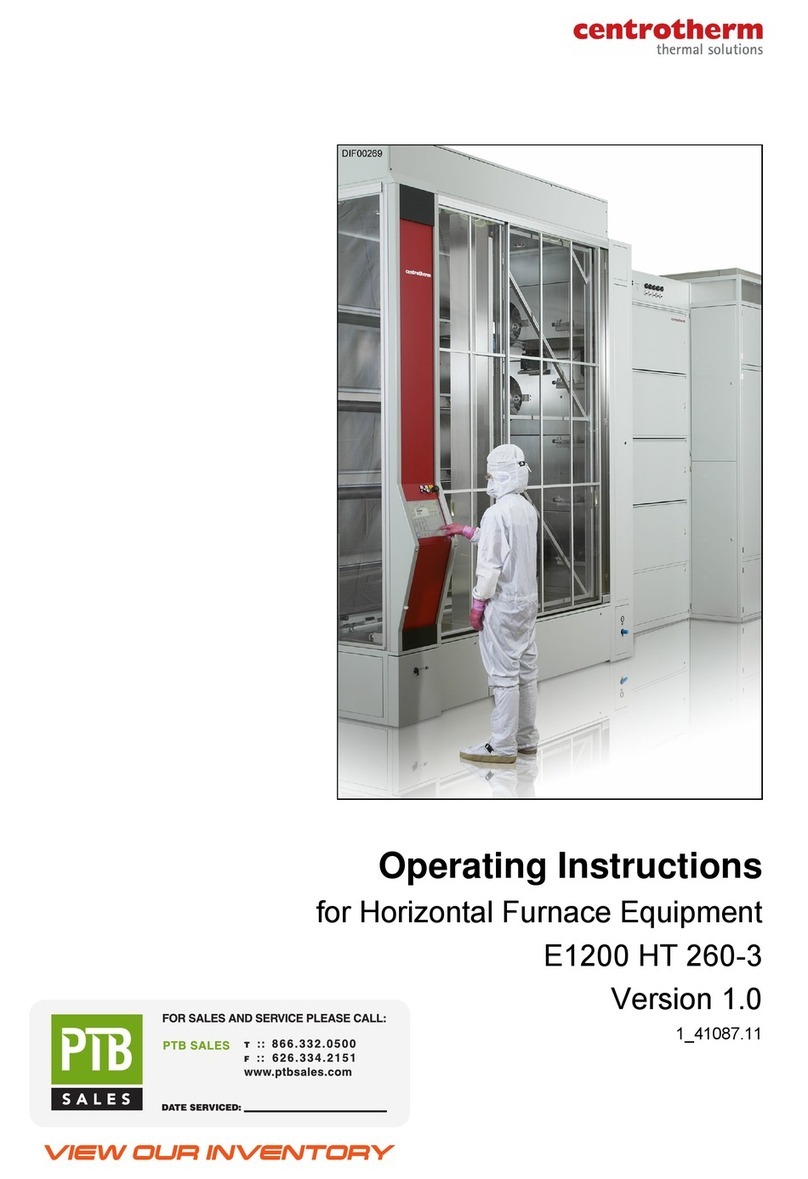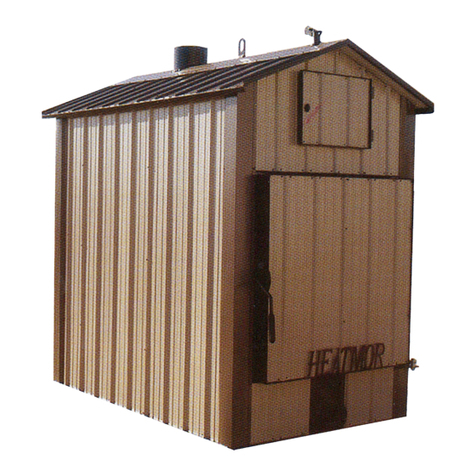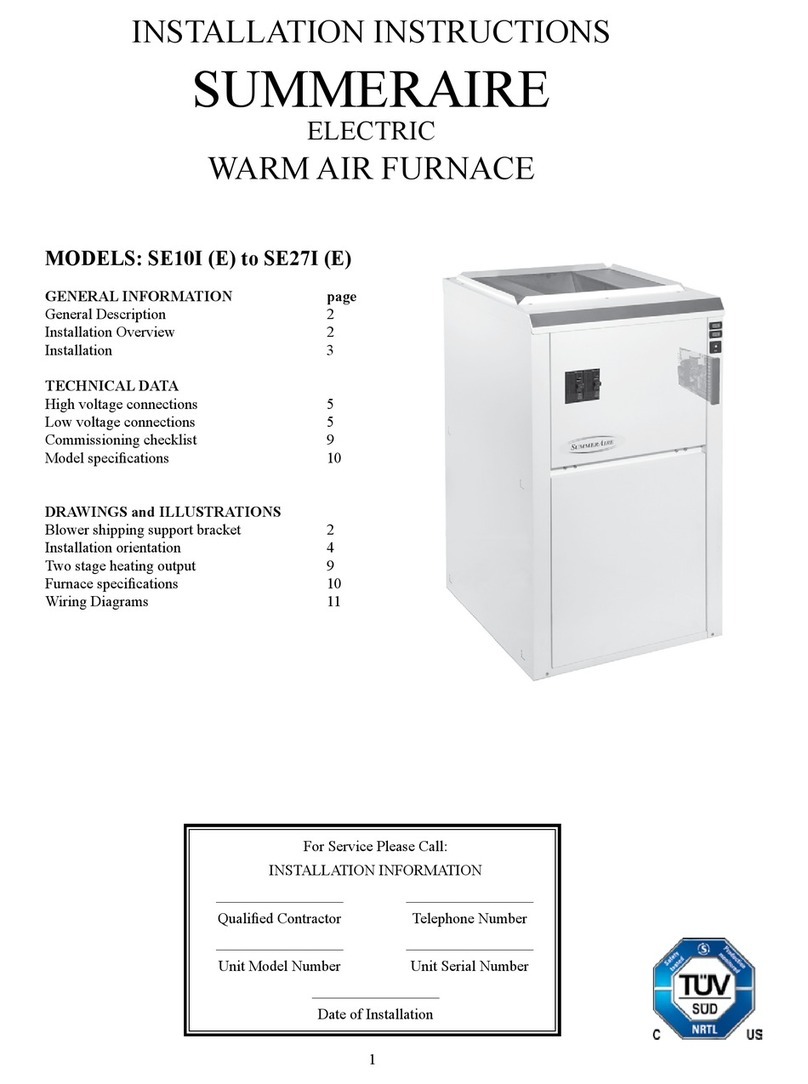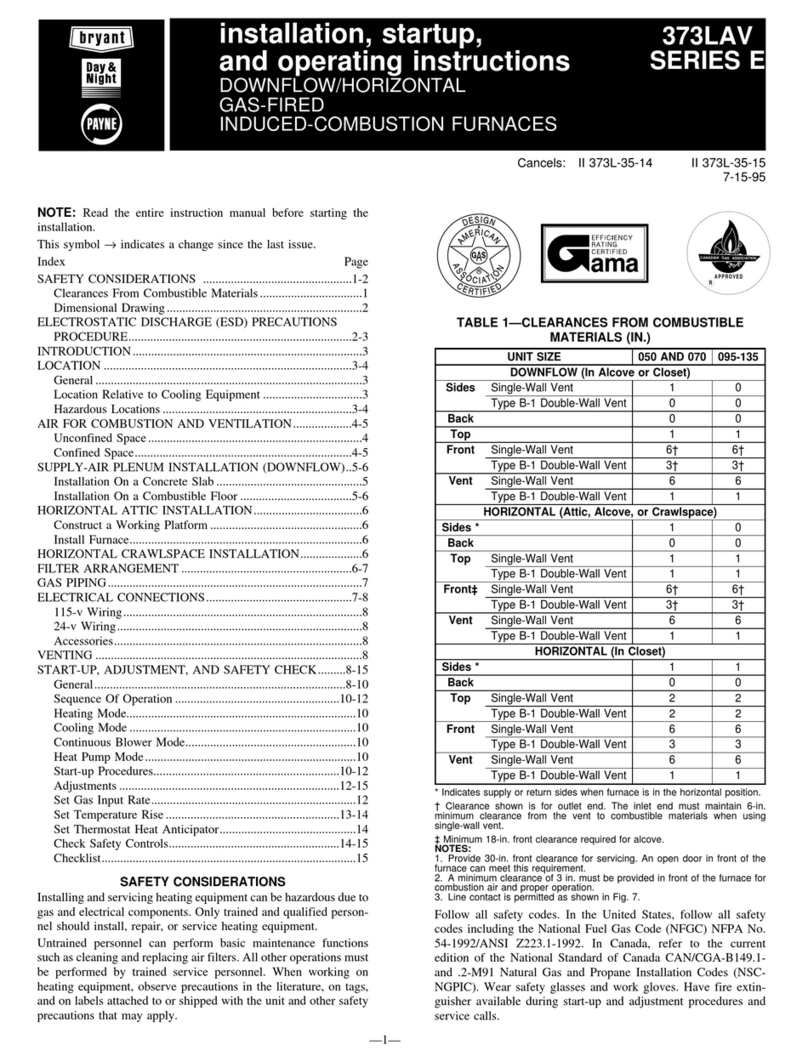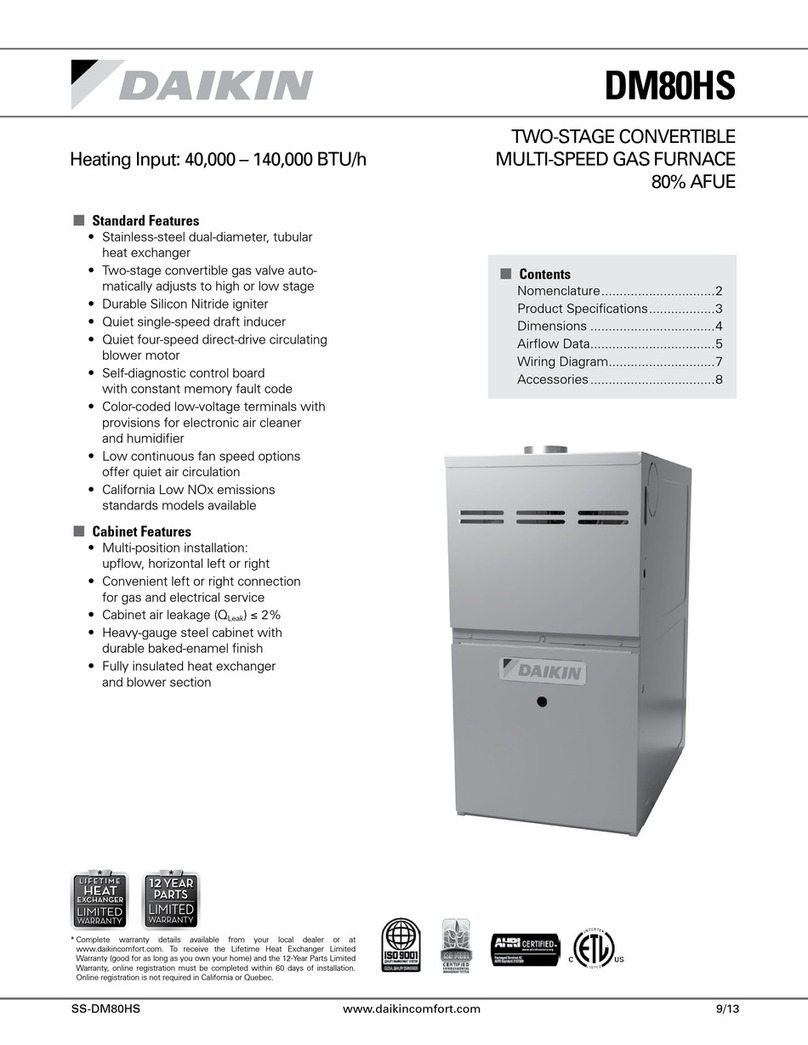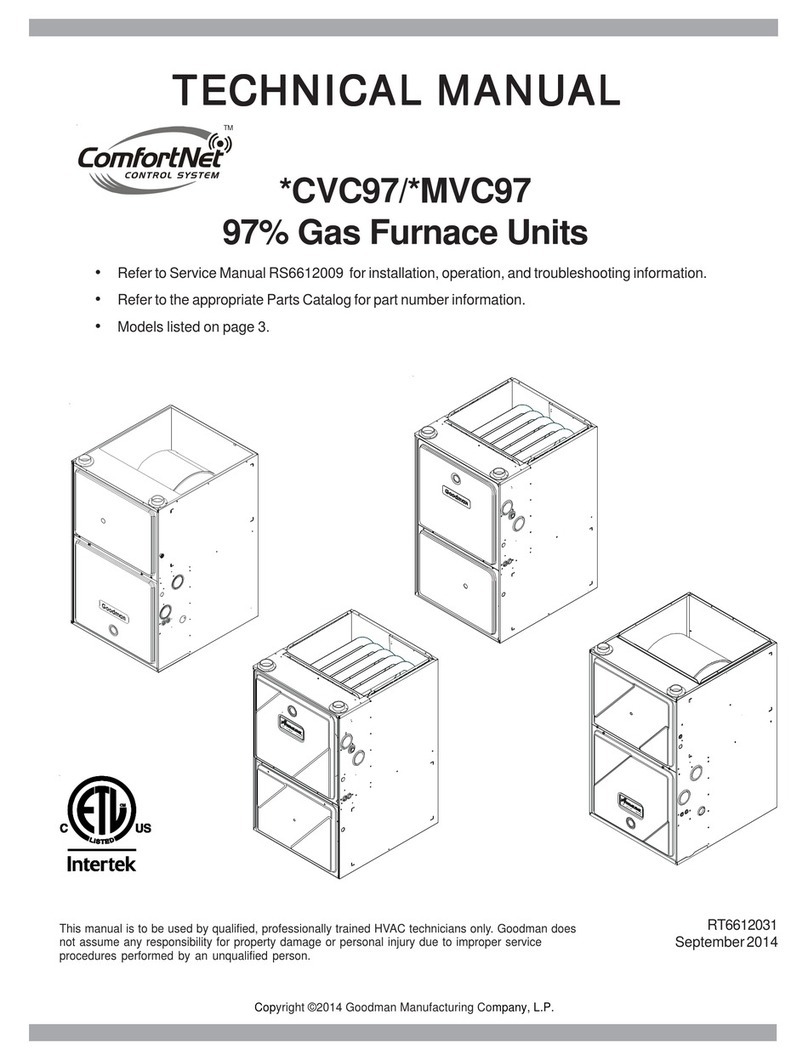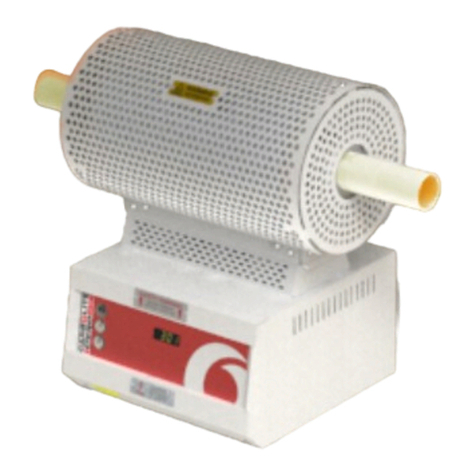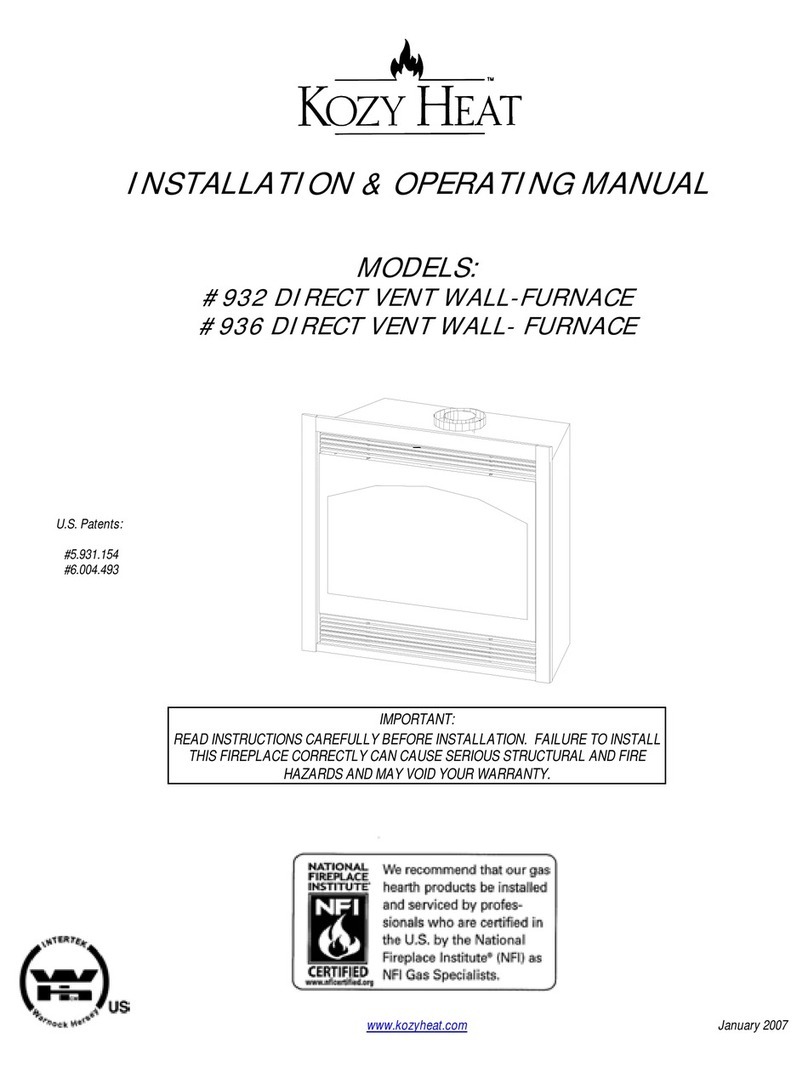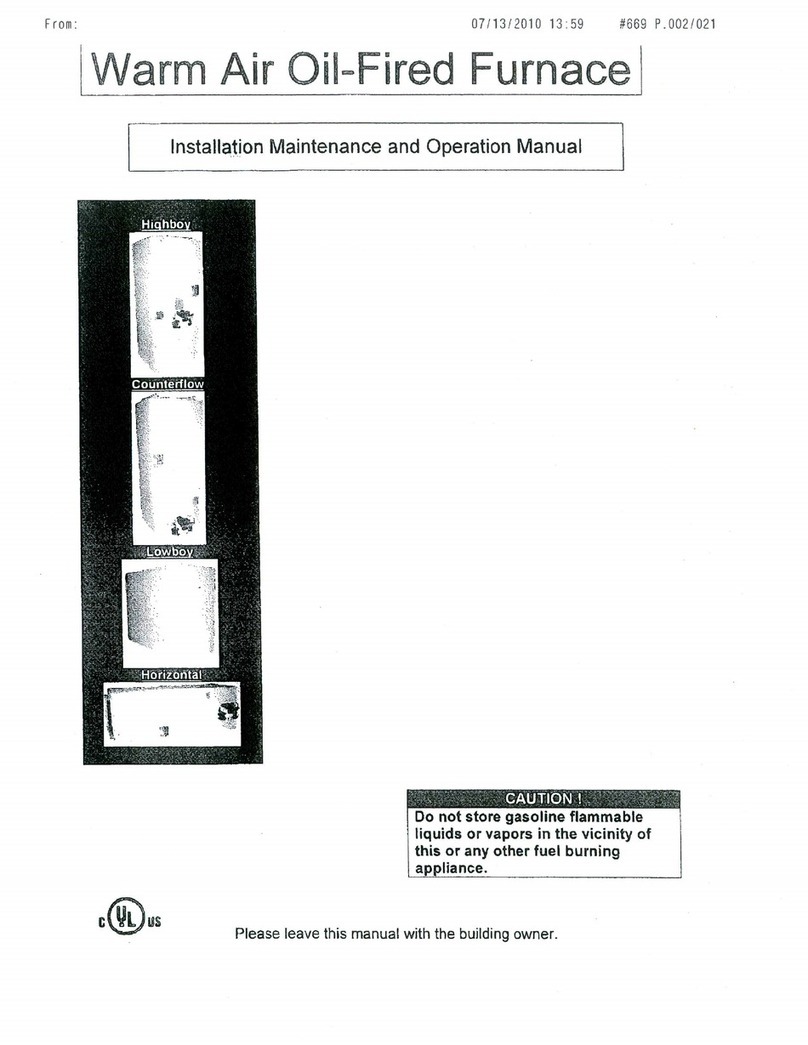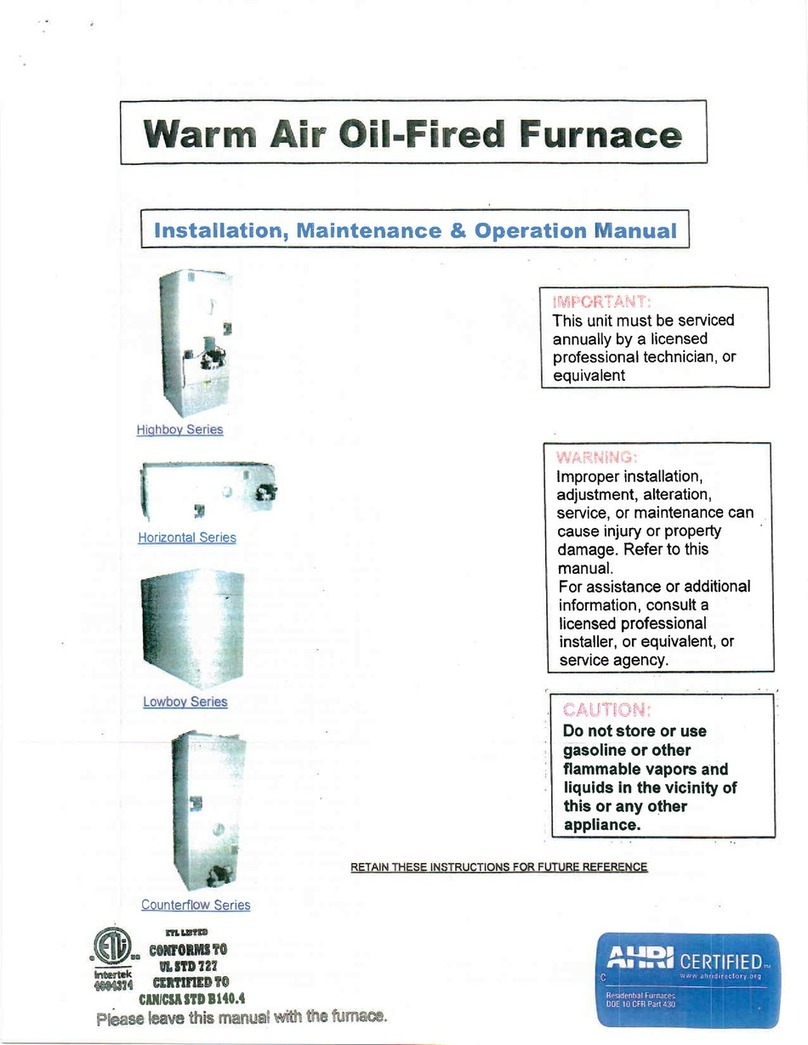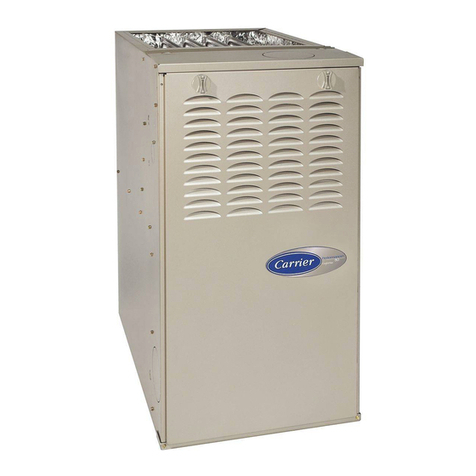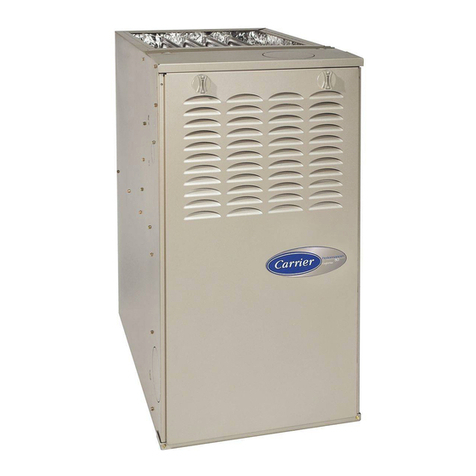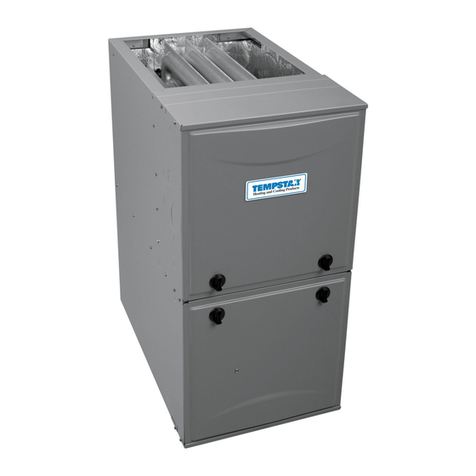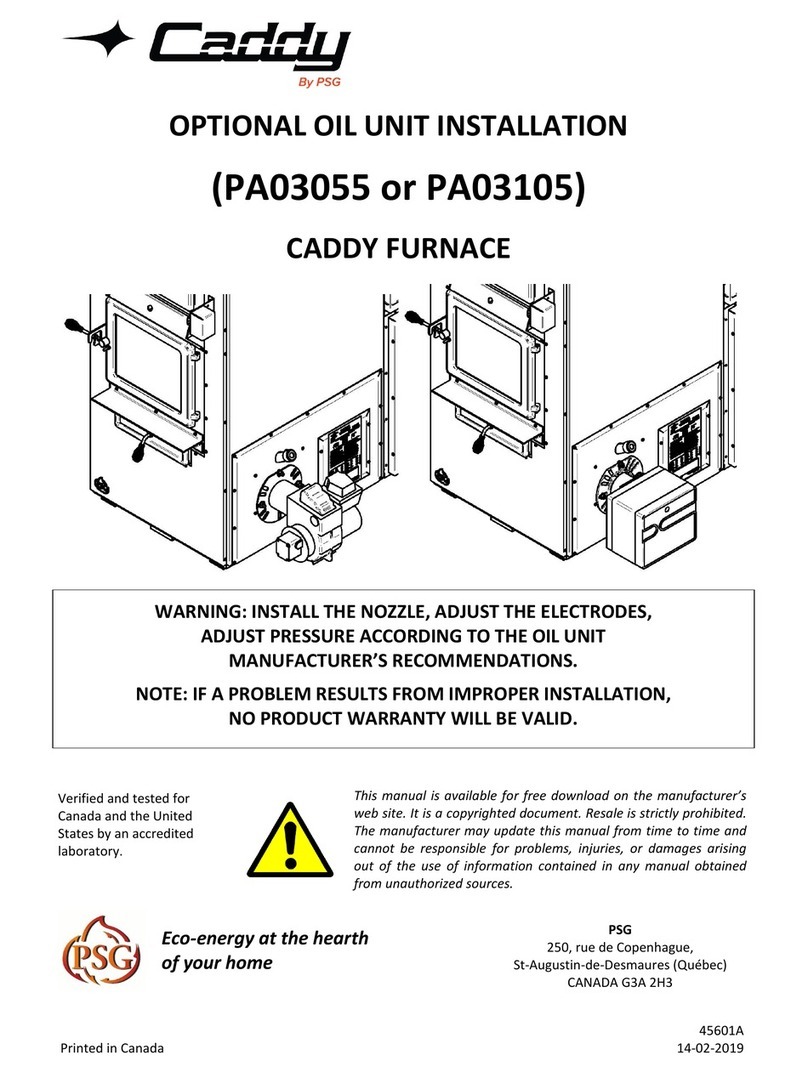Follow the instructions listed below when
selecting a furnace location.
Refer also to the guidelines provided in
Section
V.
Combustion and Ventilation
Air
Requirements.
o Centrally locate thefurnace with
respect to the proposed or existing
airdistribution system.
o Ensure the temperature
of
the return
airentering the furnace is between
55 F and 90 F when the furnace is
heating.
o Provide provisions forventing
combustion products outdoors
through a properventing system.
Special consideration should be
given to ventlflue pipe routing and
combustion air intake pipe when
applicable. Refer to Section IX,
Vent/Flue Pipe and Combustion Air
Pipe Termination Locations for
appropriate termination locations
and to determine
if
the piping
system from furnace to termination
can be accomplished within the
guidelines given.
o NOTE: The length
of
flue and/or
combustion air piping can be a
limiting factor in the location
of
the
furnace.
o Locate the furnace so condensate
flows downwards to the drain.
00
not locate the furnace
or
its
condensate drainage system in any
area subject to below freezing
temperatures without proper freeze
protection. Refer to Section
X.
Condensate Drain Lines and Trap
forfurther details.
o Ensure adequate combustion air is
available forthe furnace. Improper
or
insufficient combustion aircan
expose building occupants to
combustion products that could
include carbon monoxide. Refer to
Section V., Combustion and
Ventilation Air Requirements.
o Set the furnace on a level floor to
enable proper condensate drainage.
If
the floor becomes wet or damp at
times, place the furnace above the
floor on a concrete base sized
approximately 1-1/2 times larger
than the base
of
the furnace.
Exposure to contaminated combustion
air
will result in safety and performance related
problems.
00
not install the furnace where
the combustion air is exposed to the
following substances:
Chlorinated waxes or cleaners
Chlorine-based swimming pool chemicals
Water softening chemicals
Deicing salts orchemicals
Carbon tetrachloride
Halogen type refrigerants
Cleaning solutions (such as
perchloroethylene
Printing inks
Paint removers
Vanishes
Hydrochloric acid
Cements and glues
Antistatic fabric softeners for clothes
dryers.
Masonry acid washing materials
o Seal off a non-direct vent furnace if
it is installed near an area
frequently contaminated by any
of
the above substances. This
protects the non-direct vent
furnace from airborne
contaminants. To ensure that the
enclosed non-direct ventfurnace
has an adequate supply
of
combustion air, ventfrom a nearby
uncontaminated room
or
from
outdoors. Refer to the Section
V.
combustion and Ventilation Air
ReqUirements for details.
o
If
the furnace is used in connection
with a cooling unit, install the
furnace upstream or in parallel with
a cooling unit. Premature heat
exchangerfailure will result
if
the
cooling unit is placed ahead
of
the
furnace.
o Ifthe furnace is installed in a
residential garage, position the
furnace so that the burner and
ignition source are located not less
than 18 inches (457 mm) above
the floor. Protect the furnace from
physical damage by vehicles.
Clearances and Accessibility
Installations must adhere to the
clearances to combustible materials to
which this furnace has been design
certified. The minimum clearance
information for this furnace is provided
on the units rating label.
5




















